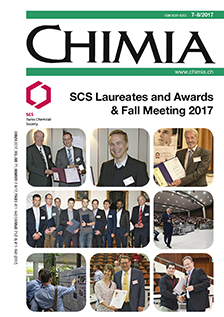Energy-effective Grinding of Inorganic Solids Using Organic Additives
DOI:
https://doi.org/10.2533/chimia.2017.451Keywords:
Agglomeration energy, Ball mill, Clinker, Comminution, Grinding aids, Molecular dynamics, Polycarboxylate ether (pce), Sieve residueAbstract
We present our research findings related to new formulations of the organic additives (grinding aids) needed for the efficient grinding of inorganic solids. Even though the size reduction phenomena of the inorganic solid particles in a ball mill is purely a physical process, the addition of grinding aids in milling media introduces a complex physicochemical process. In addition to further gain in productivity, the organic additive helps to reduce the energy needed for grinding, which in the case of cement clinker has major environmental implications worldwide. This is primarily due to the tremendous amounts of cement produced and almost 30% of the associated electrical energy is consumed for grinding. In this paper, we examine the question of how to optimize these grinding aids linking molecular insight into their working mechanisms, and also how to design chemical additives of improved performance for industrial comminution.Downloads
Published
2017-08-09
Issue
Section
Scientific Articles
License
Copyright (c) 2017 Swiss Chemical Society

This work is licensed under a Creative Commons Attribution-NonCommercial 4.0 International License.
How to Cite
[1]
R. K. Mishra, M. Weibel, T. Müller, H. Heinz, R. J. Flatt, Chimia 2017, 71, 451, DOI: 10.2533/chimia.2017.451.







